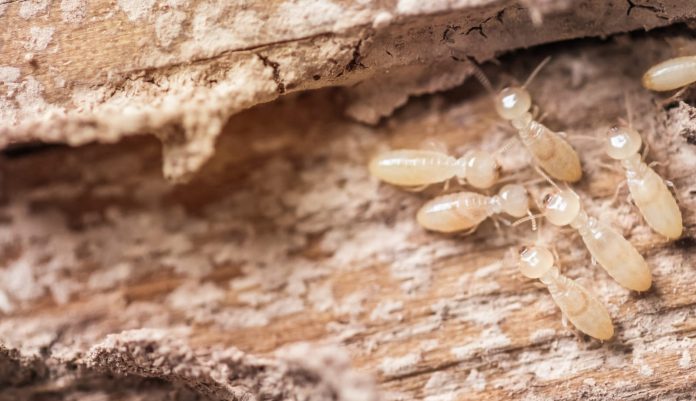Did you know that property owners in the United States spend over 2 billion dollars each year treating termites? Because wood is such a popular building material, a termite infestation can happen to almost anyone.
Keep reading to learn 3 sure-fire ways to determine if you have a termite infestation.
1. Droppings, Wings, and Bodies
Termites leave behind evidence of their presence in the form of droppings, wing piles, and dead termite bodies
Termite droppings, also known as frass or pellets, are an early sign of a termite infestation. Termites like to keep their nests clean. To accomplish this, they create holes out of which they kick their droppings. If you see a pile of material that looks like wood shavings, you should investigate further.
As termites mature, they shed their wings in piles. Because termites are attracted to light, you will often find wing piles in basement window sills. These piles are a tip-off that termites are present.
Finding the bodies of termites would confirm that you have an infestation of termites. At this point, you should not delay calling a professional pest control service.
2. Tubes and Structures of Mud
Many species of termites need to stay moist to survive. Mud tubes block out harsh weather to keep their colonies at the proper moisture and humidity levels.
Mud tubes have a similar circumference as a pencil. To stay on top of termite detection, walk your property checking for signs of mud tubes in these common locations:
- The base of your home where your structure meets the ground
- The sides of your outdoor shed
- The bottom of walls in any unfinished areas like cellars or barns
While some mud tubes are remnants of inactive swarms, any sign of termites’ structures should be checked out by a professional.
3. Damaged Wood
Evidence of termites presents in wood in a few different ways.
If you see wood that is swollen and you have no reason to suspect water damage, you should check for termites. Termite colonies live just beneath the surface of the wood and can cause the panels to swell.
As termites chew through wood, they leave long grooves behind. These grooves eventually deepen and turn into tunnels. Inspect wood carefully for these signs.
If left long enough, termites can hollow out wood entirely. If you knock on a piece of wood and it sounds hollow, this could indicate interior termite damage.
Get Rid of Your Termite Infestation
If you see any of the signs mentioned above, it is time to call the experts. While it is easier in the moment to ignore the problem, larger and costlier fixes await you down the road if you do.
A professional has all of the skills needed to fix your termite infestation. They can give you peace of my by guaranteeing a pest-free home now and in the future!
Check out our blog for more helpful and informative posts!










